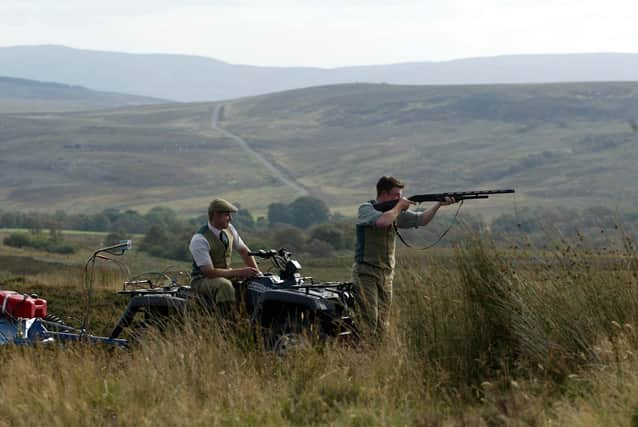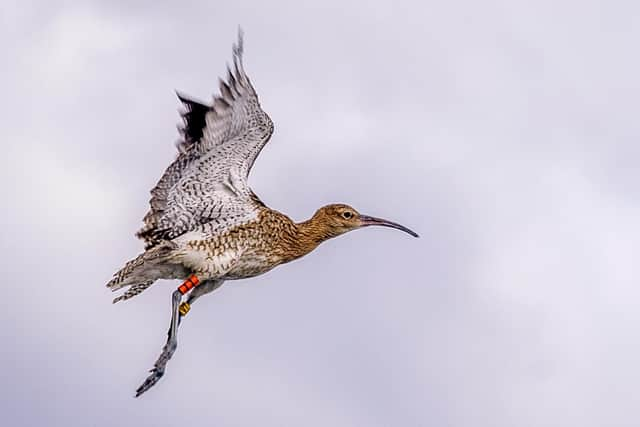Predator control is a vital part of efforts to save species like the curlew from extinction – Rory Kennedy


In this rather traditional community, certain elements of the show, run by the Game and Wildlife Conservation Trust (GWCT), are sacrosanct – those crowd pleasers such as gundog scurries, falconry and the usual descent into carnage that masquerades as terrier racing.
For the foodies, there is Scotland’s finest rural produce, from Arbroath smokies prepared in front of your eyes to the wild venison charcuterie in our food hall. And for those that fancy a little self-indulgence, this year we also have a riverside restaurant run by Nick Nairn.
Advertisement
Hide AdAdvertisement
Hide AdAs organisers, the challenge is to keep it fresh and as relevant to tomorrow’s audience as it is to seasoned veterans. This year we are launching our storytelling event, ‘Listen to the Land’, with a wide range of speakers. The itinerary is varied, covering all aspects of land use and conservation.
However, in addressing the changing and diverse nature of our landscapes, we have not shied away from having those ‘courageous conversations’, with authors and experts discussing subjects such as the future of deer management and rewilding.
The GWCT is a conservation charity and we have been putting on the Scottish Game Fair for 33 years. We work with traditional land managers to mobilise them as a delivery mechanism for conservation and the game fair holds a huge outreach role for us and many other rural organisations.
We also provide a key educational focus to the game fair, including our central exhibit. Last year this was all about greening your farm and the role technology can play in monitoring biodiversity outcomes, a cause we champion.


This year’s exhibit is a closer look at GWCT’s core conservation approach, often dubbed the ‘three-legged stool’. First developed as part of our pioneering work with grey partridge, the analogy is relevant as the stool is rendered useless unless all three legs are present.
With conservation for partridge and other species, these ‘legs’ represent habitat, feeding and predation management. We need to carve out and manage suitable habitat which addresses the often varied needs of the target species.
We then need to address the specific requirement for food sources. In the case of partridge, this means farmers giving up space for wildflower margins to attract insects, the food source for chicks. Later the birds will progress on to an ostensibly seed based diet. Some wild bird feeding can be addressed through the wildflower mixes, however the predominant measure is the provision of bird feeders, especially critical during the ‘hungry gap’ of winter and early spring.
Wildflower margins, untilled headlands and beetle banks are now a common part of agri-environmental schemes but were pioneered at our GWCT research and development farm at Allerton, which celebrates its 30th anniversary this year.
Advertisement
Hide AdAdvertisement
Hide AdThe last leg of the stool is the one that is often neglected, that of predator management.
We incorporate small-scale shoots into both our demonstration farms at Allerton and Auchnerran, not for commercial or ideological reasons but as a real-world demonstration of how a working farm can provide dedicated predator management through gamekeeping.
As part of an extended trial at Allerton, we had several years where predator management was removed, after significant biodiversity baselining, and later reinstated.
The results saw partridge numbers crash during the period without keepering, but also a similar pattern for a host of other farmland bird species. This needs to be seen in the context of some farmland species declining nationwide by over 90 per cent since the late 1960s.
On a national level, intensification of farming was undoubtedly the primary driver for these cataclysmic declines, but predator control is a vital part of the resulting rescue plan.
Similarly, our upland research has shown predator management leading to a threefold improvement in the breeding success of red-listed species such as curlew, golden plover and lapwings.
The curlew is the UK’s bird of highest conservation concern and between 1996 and 2010 alone the Scottish population fell by over 50 per cent. Without predator management, we may well lose the battle to save this iconic species in our lifetime.
This is a thorny subject, though most conservation bodies engage in some degree of predator control with mixed levels of scale, transparency and enthusiasm.
Advertisement
Hide AdAdvertisement
Hide AdRecently our evidence-led approach was vindicated by NatureScot’s Scientific Advisory Committee, in establishing the need for predator control to address the forecast extinction of our capercaillie within 20 to 30 years.
Despite clear government direction, some prominent ‘green’ landowners still fail to acknowledge this inconvenient truth, even when an iconic prey species is on the brink of extinction.
Meanwhile we are working with gamekeepers to modernise practices, devise best practice and training, and increasingly use technology for recording and transparency.
The game fair allows us the opportunity to share our conservation work with the wider public. However, it is also the key place where we can engage the land-use community and we see those who live and work within our countryside as a necessary part of the solution.
The Scottish Game Fair has something for everyone. Bring your children to the Kids Hub to learn about the ecological role of a cow pat, treat yourself to a day binging on our finest wild produce or enjoy the talent on display in our Artists in Action tent.
It is easy to caricature rural culture into simplistic stereotypes but our rural communities are diverse in their make-up, beliefs, and interests. We hope to represent this at the game fair and welcome everyone to join us in this great festival of rural life.
Rory Kennedy is the Scottish Director of the Game and Wildlife Conservation Trust
Comments
Want to join the conversation? Please or to comment on this article.
